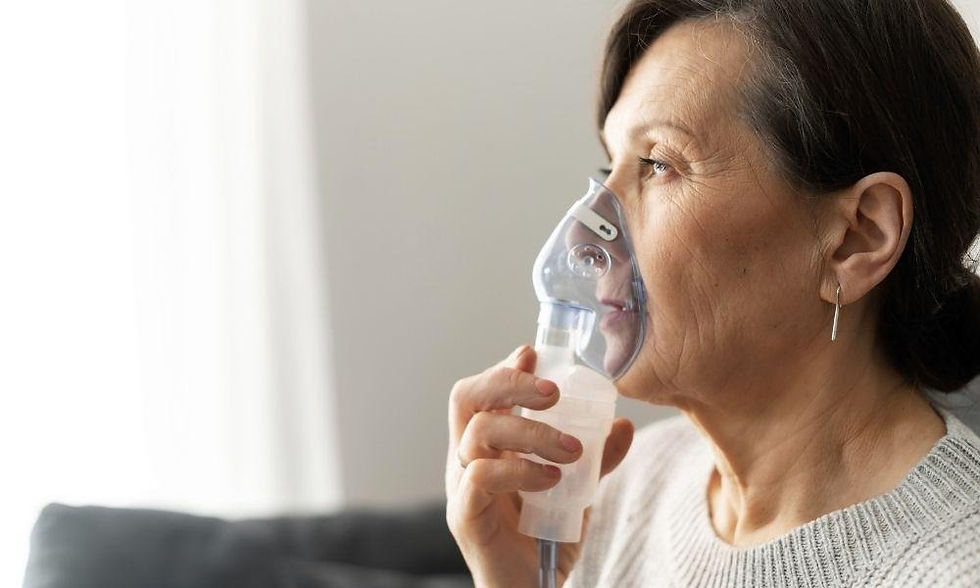How Oxygen Therapy at Home in Dubai Works
- enfieldclinicseo
- Aug 13
- 4 min read
Breathing is something we often take for granted—until it becomes difficult. For individuals with certain respiratory conditions, maintaining proper oxygen levels is essential for everyday health and comfort. That’s where home-based solutions step in. Oxygen Therapy at home in Dubai is becoming an increasingly popular option, offering patients the ability to receive necessary oxygen support in the comfort and familiarity of their own living space. This approach not only improves quality of life but also empowers individuals to manage their health with greater independence.

Understanding Oxygen Therapy
Oxygen therapy is a medical treatment designed to deliver additional oxygen to the lungs when the body’s natural intake isn’t enough. It can be prescribed for a range of conditions such as chronic obstructive pulmonary disease (COPD), pneumonia recovery, asthma, and other respiratory disorders. At home, oxygen therapy is usually provided through devices like oxygen concentrators or portable oxygen cylinders, which ensure a steady and safe supply of oxygen.
The primary goal is simple: to maintain healthy oxygen levels in the blood, which supports organ function, reduces strain on the heart, and enhances overall energy levels. Patients often report feeling more alert, less fatigued, and more capable of participating in daily activities when they receive consistent oxygen support.
The Setup at Home
Oxygen therapy at home typically begins after an evaluation and prescription from a healthcare provider. Once the therapy is recommended, a suitable device is selected based on the patient’s oxygen needs and lifestyle.
Most people use one of two main delivery systems:
Oxygen Concentrators – These devices draw air from the surroundings, filter out nitrogen, and deliver concentrated oxygen through a nasal cannula or mask. They are commonly used for continuous, long-term therapy.
Oxygen Cylinders – Containing compressed oxygen, these tanks are more portable but require regular refilling or replacement.
Along with the delivery system, patients may also use humidifiers to prevent dryness in the nasal passages, and tubing of various lengths to move around the home comfortably.
How It Works Step-by-Step
Home oxygen therapy works by supplementing the oxygen your body naturally takes in through breathing. Here’s a simplified breakdown:
Oxygen Source – The concentrator or cylinder provides oxygen at the prescribed flow rate.
Delivery Interface – A nasal cannula or face mask ensures the oxygen is inhaled directly into the lungs.
Absorption – The oxygen enters the bloodstream through the alveoli (tiny air sacs in the lungs).
Distribution – Oxygen-rich blood is circulated throughout the body, supporting organ function and overall vitality.
Flow rates and duration of use vary per individual. Some require continuous oxygen support, while others may only need it during sleep, exercise, or periods of breathlessness.
Benefits of Home-Based Therapy
Oxygen therapy at home offers multiple advantages beyond convenience:
Comfort and Familiarity – Patients can remain in their own home, surrounded by loved ones.
Flexibility – Portable devices allow for movement around the house and even travel in some cases.
Improved Well-being – Enhanced oxygen levels often lead to better sleep, increased mental clarity, and higher energy.
Independence – Reduces the need for frequent hospital visits while allowing patients to maintain control over their routine.

Safety Considerations
While oxygen therapy is generally safe, it’s important to follow certain guidelines:
Keep oxygen devices away from open flames, cigarettes, and heat sources.
Ensure proper ventilation in the room where oxygen is used.
Clean cannulas, masks, and tubing regularly to prevent infections.
Never adjust oxygen flow rates without professional advice.
Home oxygen systems are designed with safety in mind, but patient and caregiver awareness remains key to ensuring a secure environment.
Living with Oxygen Therapy at Home
For many, adapting to life with oxygen therapy takes a bit of time. The initial adjustment period may involve learning how to move around with tubing, refilling or maintaining equipment, and developing new habits to integrate therapy into daily life.
Some patients choose to personalize their therapy experience—selecting tubing colors, organizing their space to accommodate devices, and planning oxygen-friendly activities. Over time, these adjustments become second nature, allowing individuals to focus on living rather than on the therapy itself.
Family members and caregivers often play an important role in supporting patients. Simple acts, like helping to set up equipment or reminding loved ones to check oxygen levels, can make a significant difference in treatment success.
The Future of Home Oxygen Therapy in Dubai
With advances in technology, oxygen therapy devices are becoming lighter, quieter, and more efficient. Dubai’s healthcare infrastructure supports this trend by providing access to reliable equipment and patient education. As awareness grows, more people are discovering that home-based oxygen therapy is not just about managing illness—it’s about improving quality of life.
From compact portable oxygen concentrators to smart monitoring systems that track oxygen saturation in real time, the future holds promising developments that will make home therapy even more accessible and user-friendly.
In essence, oxygen therapy at home is about more than just breathing—it’s about living fully. By delivering essential oxygen support in a comfortable setting, this approach offers a blend of medical necessity and everyday convenience that empowers patients and their families. For those navigating respiratory challenges, Oxygen Therapy at home Dubai stands as a valuable option for maintaining health, independence, and a better quality of life.




Comments